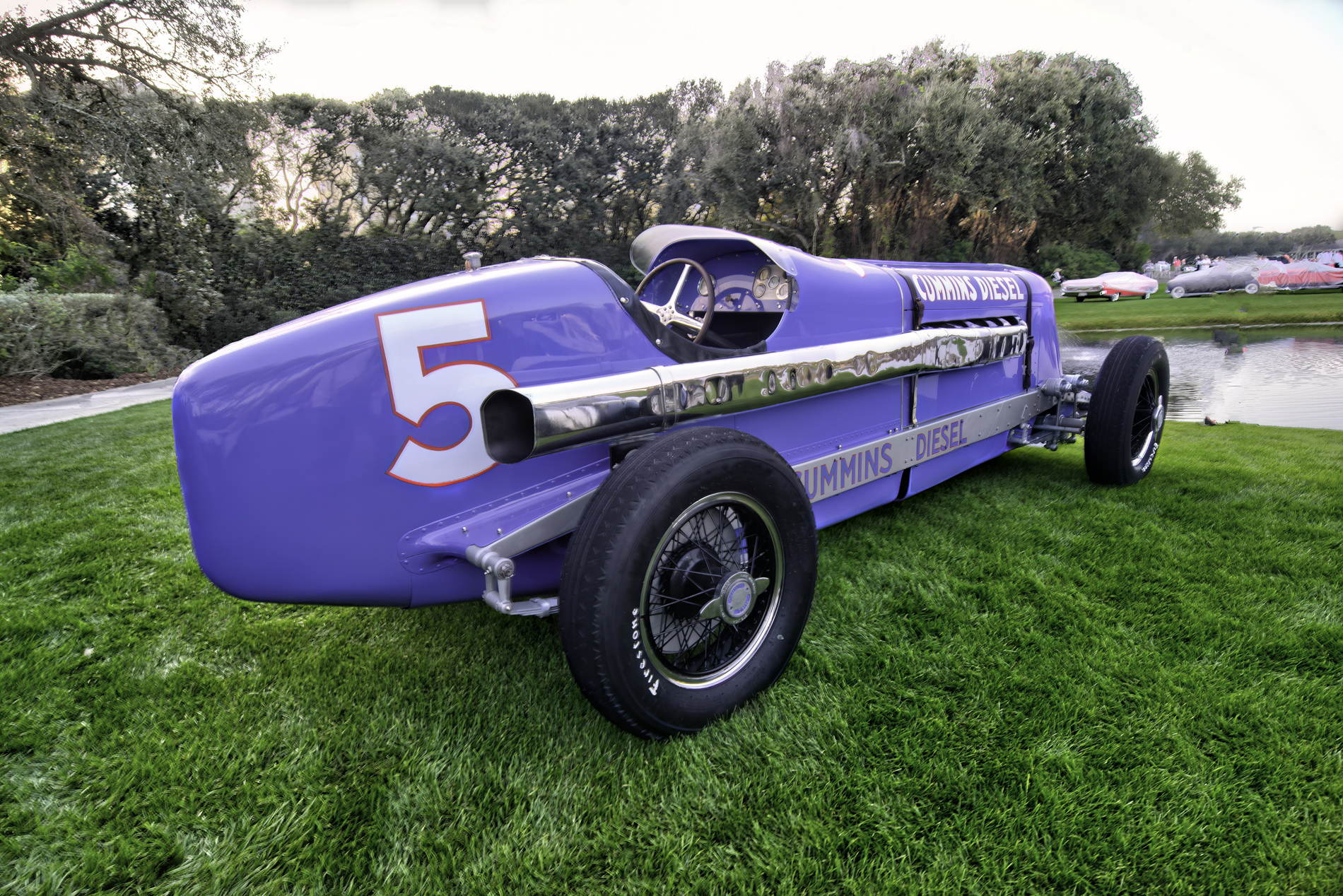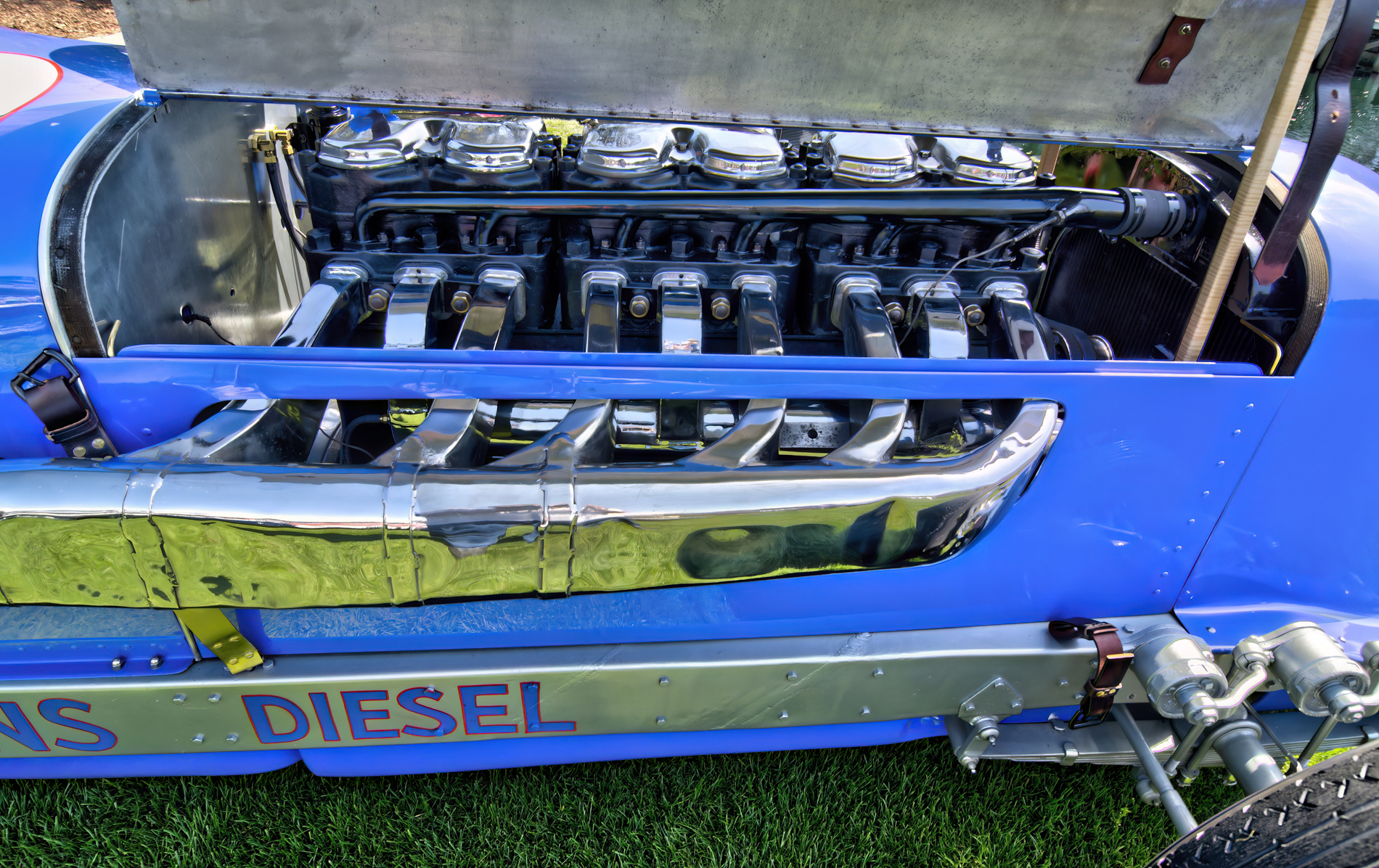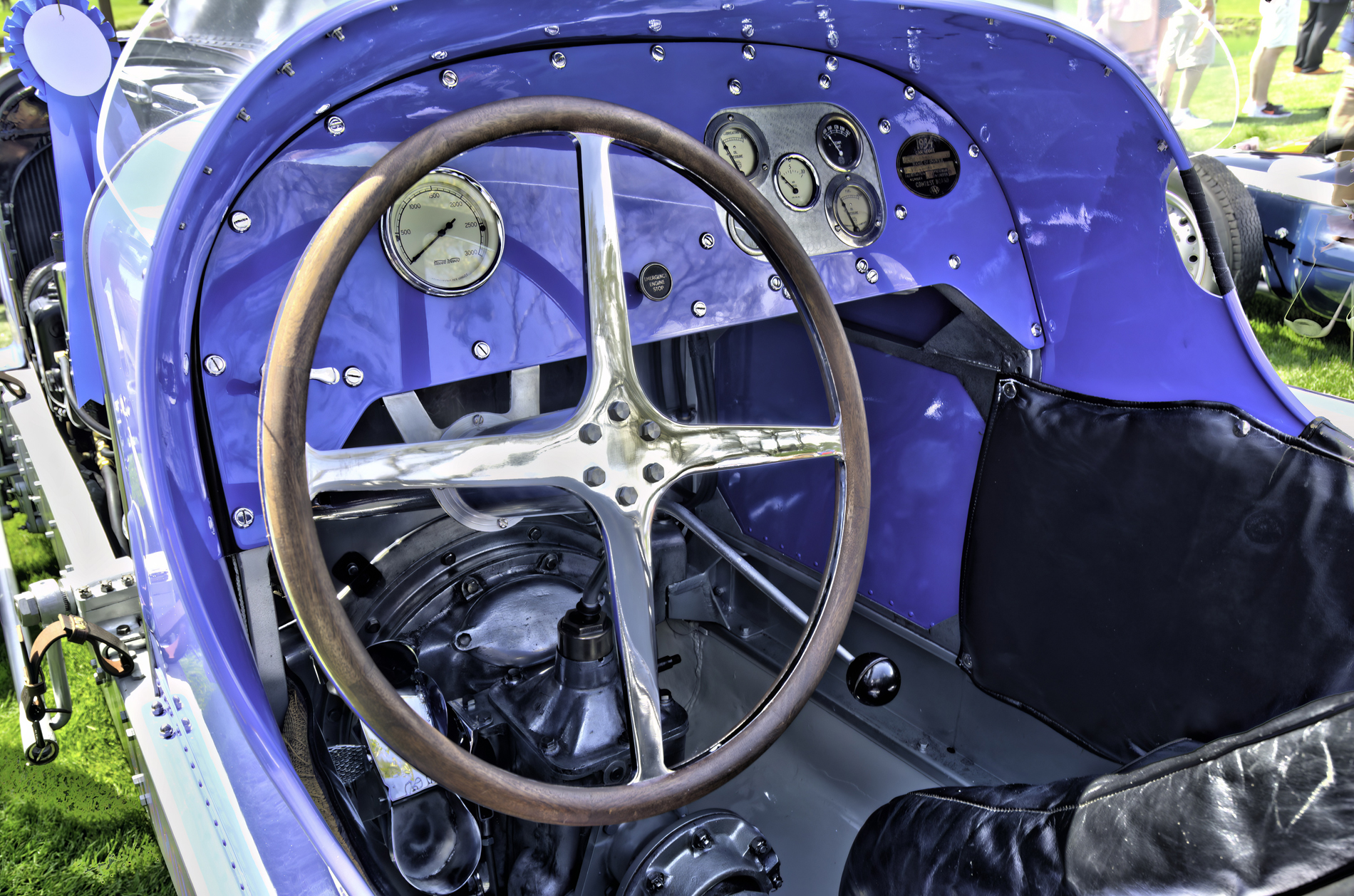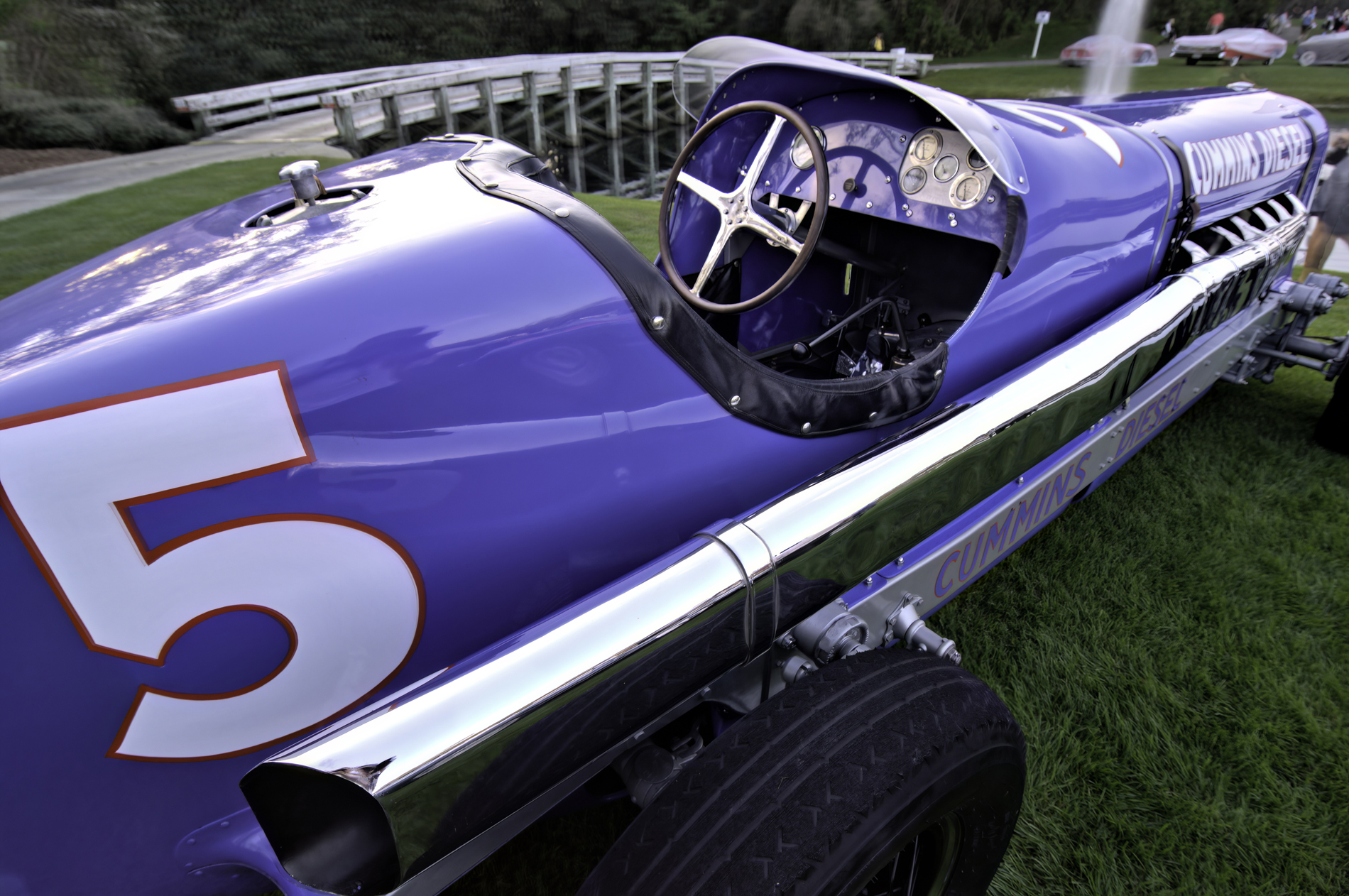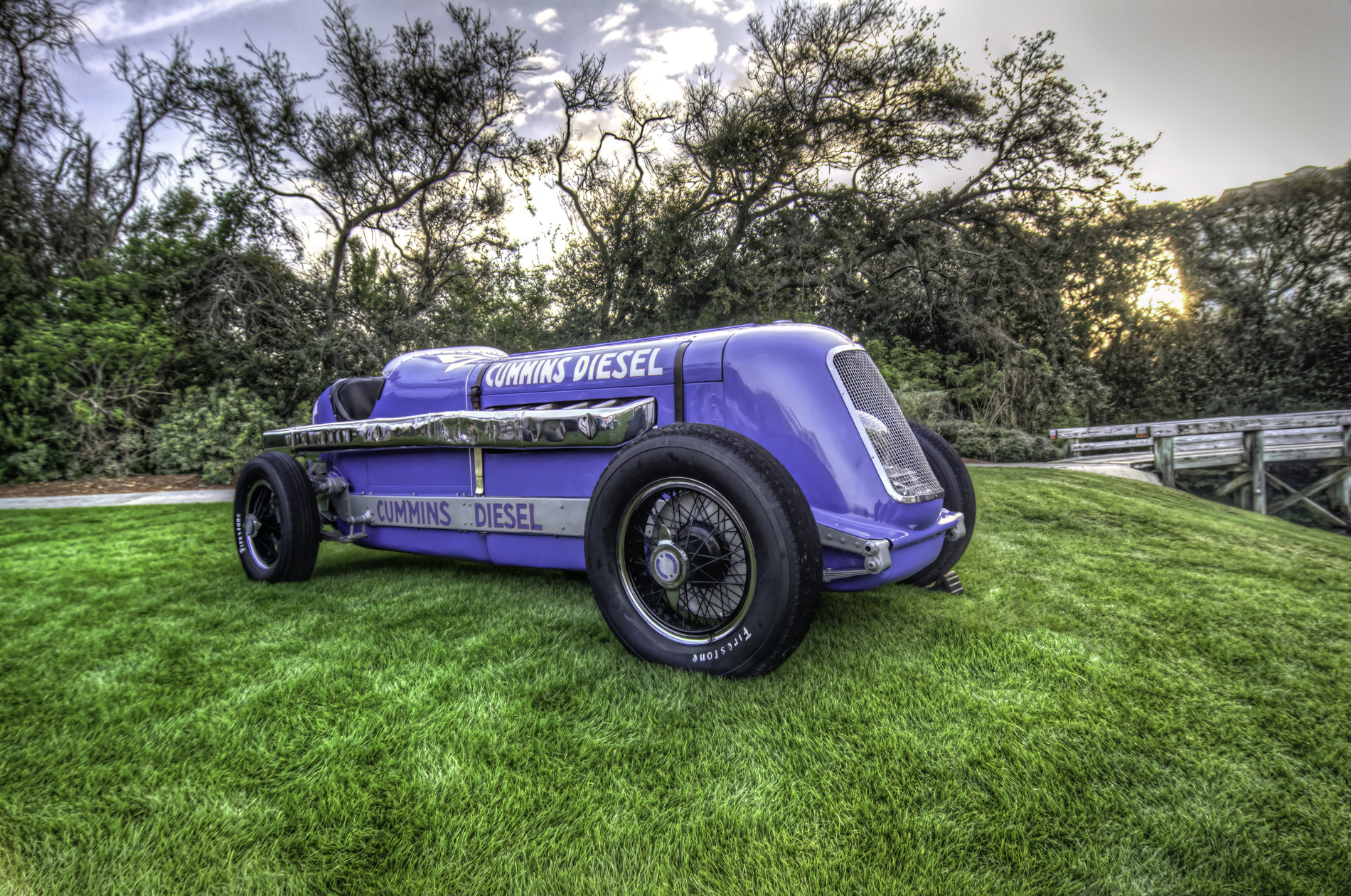
This 1934 Duesenberg Cummins Diesel is one of two Cummins powered Duesenbergs built by Clessie Cummins and the Cummins Engine Company for the 1934 Indianapolis 500. It served as a bed in the origins of the battle between the two stroke diesel engines of General Motors/Detroit Diesel and the four stroke diesel engines Cummins would build. At Indianapolis the car was powered by a two stroke version of the Cummins four-cylinder Model H diesel engine as part of a competition within the company to help determine Cummins' future design architecture. Their other entry in 1934 was an identical Duesenberg powered by a four stroke version of the same engine. This car qualified 29th at 105.920 mph and finished 12th at an average speed of 88.566 mph. In 1935, it was lengthened to accomodate a supercharged six-cylinder four stroke Model H engine. Bill Cummings drove it at Daytona Beach setting a diesel land speed record at 137.195 mph. Both engines used a Cummins high performance single disc fuel injection system, one more step in Cummins history of innovation to make people's lives better.
You may purchase a print of this 1934 Duesenberg Cummins Diesel in our dElegance 2019 online gallery.
The Vintage Automobile Article Index
